
Jewelry craftsmanship - an ancient art of creating unique masterpieces from precious materials
Jewelry making (from the Dutch word "juwelier") is a form of decorative applied art in which an artist creates items from precious materials using various processing techniques. In jewelry making, although less common, colored metals and their alloys, semi-precious, and costume stones are also used. A skilled jeweler must not only know how to use specialized tools and be well-versed in the technical aspects of the profession but also possess exceptional creative abilities to develop original designs for their works.
Jewellery. Scythian pectoral from the Tolstaya Mogila barrow, 4th century BC.
Jewelry making rightfully belongs to the category of the most prestigious creative professions, the secrets of which master craftsmen carefully guard and pass down from generation to generation. People are willing to pay enormous amounts of money for unique masterpieces crafted by renowned jewelers.
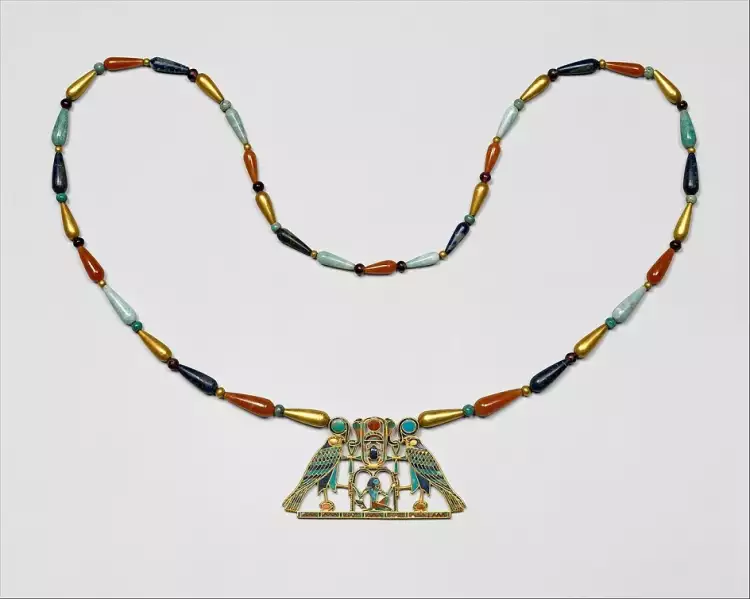 Jewellery. Ancient Egyptian pectoral and necklace of Princess Sitathoriunet, XIX century BC
Jewellery. Ancient Egyptian pectoral and necklace of Princess Sitathoriunet, XIX century BC
Characteristics of jewelry making
Jewelry making is a special art in which a talented master can transform costly materials into works that hold not only monetary but also significant artistic value.
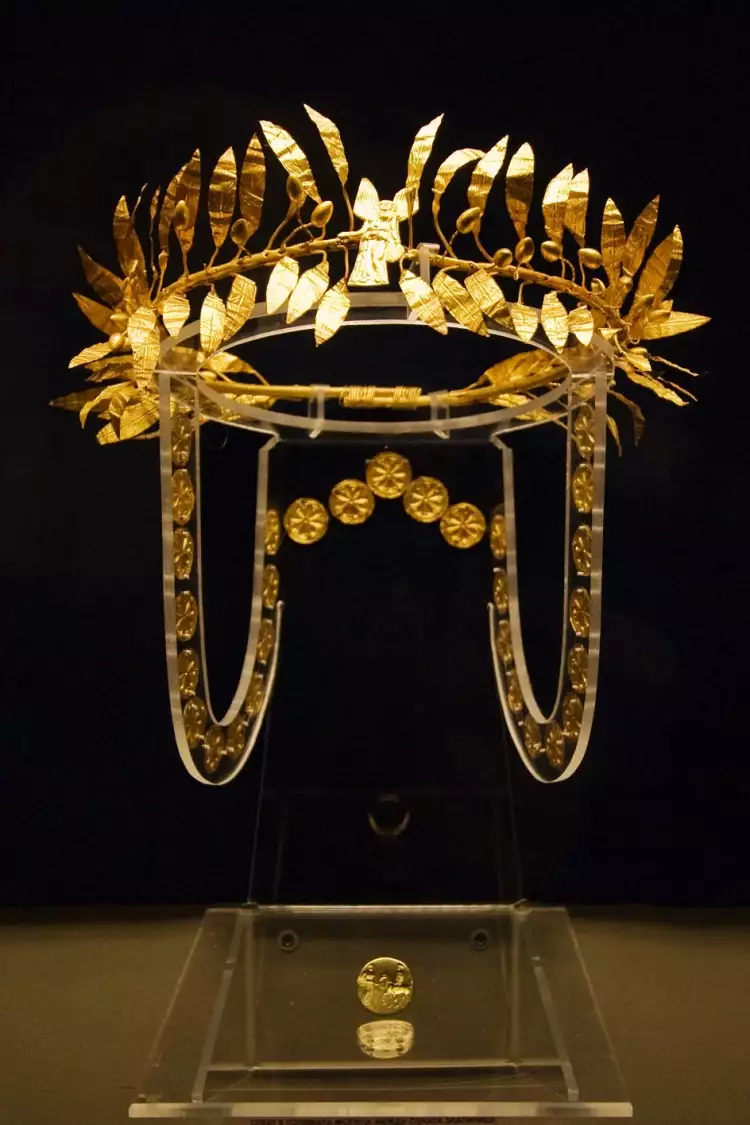 Jewellery. Golden diadem-wreath from the Kingdom of Odris, 4th century BC
Jewellery. Golden diadem-wreath from the Kingdom of Odris, 4th century BC
Among the most common materials used in jewelry making are:
- Precious metals (gold, silver, and platinum).
- Precious gemstones (diamonds, sapphires, emeralds, rubies, pearls).
- Semi-precious gemstones (amber, turquoise, amethysts, topaz, opals).
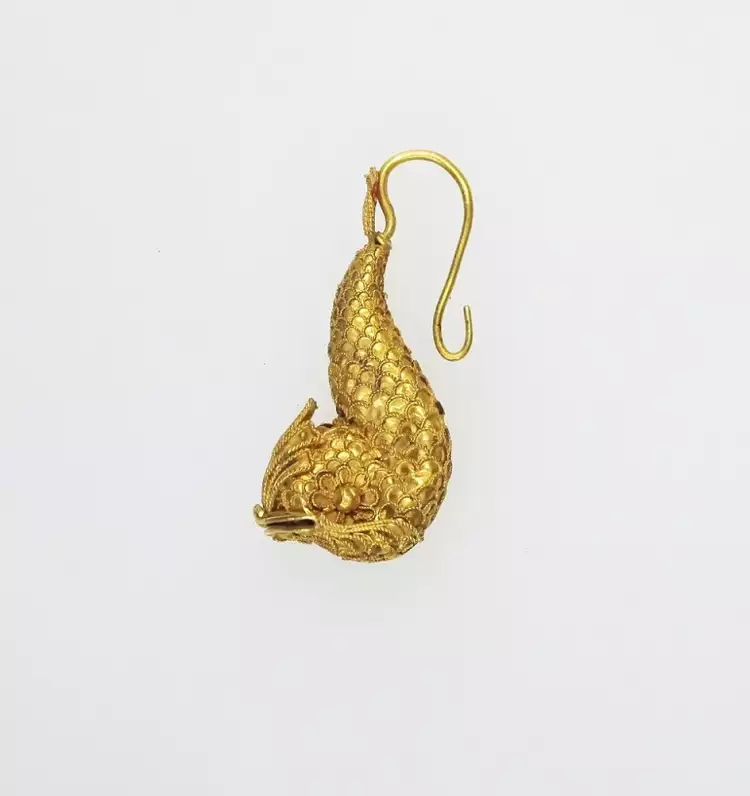 Jewellery. Etruscan dolphin earring, 5th century BC
Jewellery. Etruscan dolphin earring, 5th century BC
Various jewelry items can be divided into the following main groups:
- Artistic elements for decorating cold and firearms.
- Household items (book covers, vessels, utensils, boxes, clocks, cases).
- Items of religious significance (crosses, reliquaries, icon covers, sacred book covers, lamps, offering plates, censers).
- Insignia and medals (orders, medals, commemorative badges).
- Ornaments (bracelets, brooches, necklaces, chains, combs, tiaras, cufflinks, pendants, rings, collars, lockets, earrings, diadems).
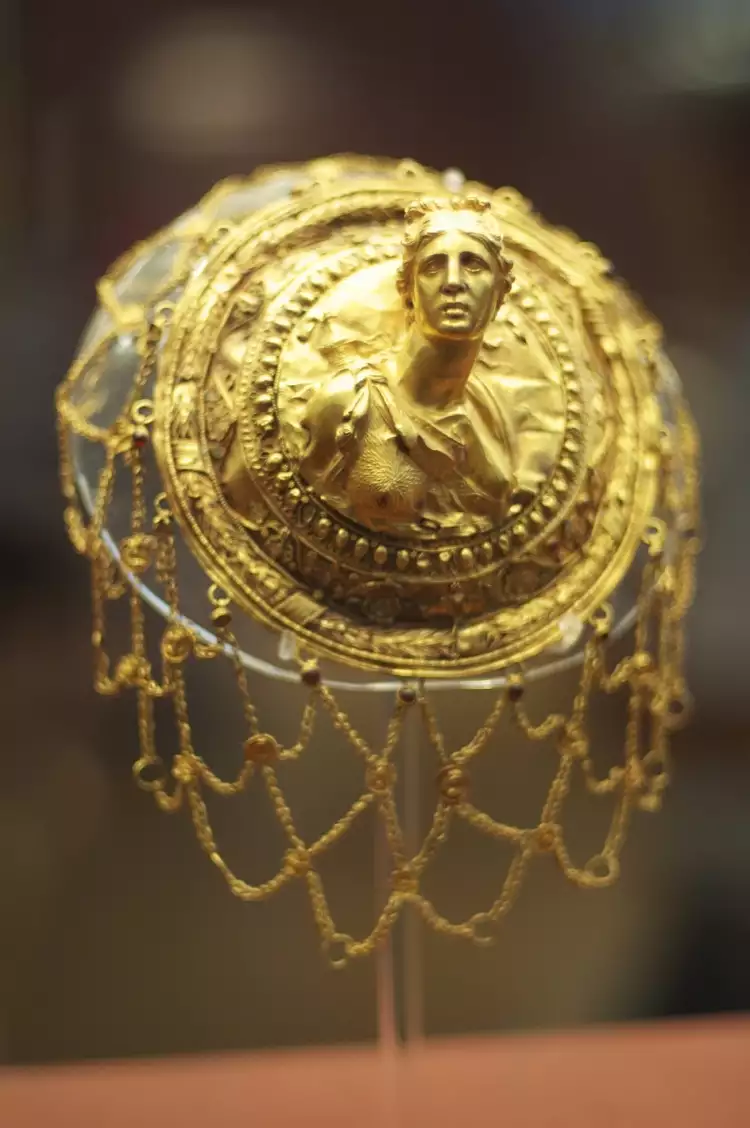 Jewellery. Ancient Greek openwork hair net, 4th-3rd centuries BC
Jewellery. Ancient Greek openwork hair net, 4th-3rd centuries BC
Jewelry masters employ various artistic techniques to work with metals and stones, including:
- Forging.
- Casting.
- Stamping.
- Embossing.
- Carving.
- Engraving.
- Blackening.
- Enameling.
- Inlaying.
- Etching.
- Rolling.
- Polishing.
- Grinding.
- Faceting.
- Bending.
- Soldering.
- Mounting.
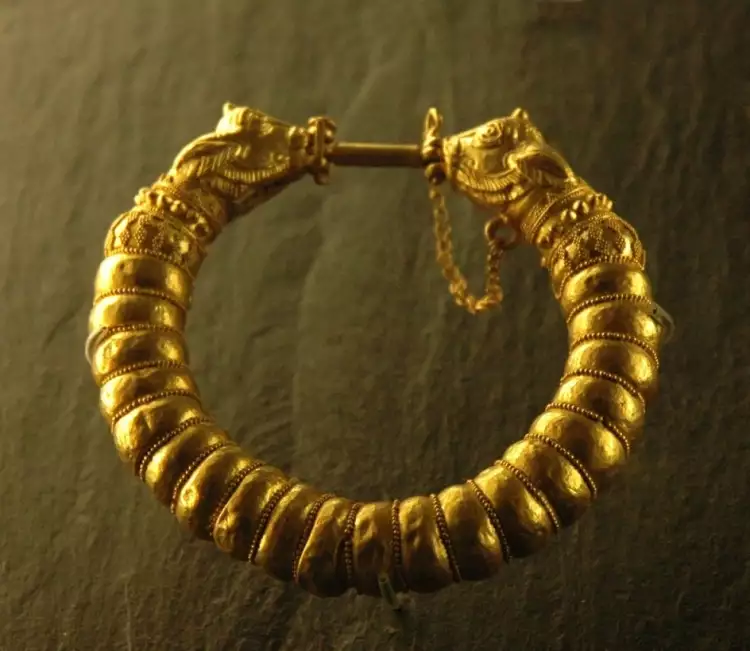 Jewellery. Syrian gold bracelet, 4th century BC
Jewellery. Syrian gold bracelet, 4th century BC
One unique feature of jewelry making is the ability to recycle precious metals multiple times by melting scrap material. Unfortunately, this often leads to the ruthless destruction of unique masterpieces discovered by treasure hunters and stolen by thieves.
Jewellery. Byzantine necklace, VI-VII AD
History of Jewelry Making
The history of jewelry making spans over 5,000 years, dating back to the earliest artistic gold artifacts found in modern-day Egypt. During those ancient times, local artisans were already skilled in crafting various adornments from noble metals, including bracelets, necklaces, and burial masks of pharaohs.
Jewellery. Babylonian gold earrings with cuneiform inscriptions, 21st century BC
Over the following millennia, the art of jewelry making spread from Egypt to neighboring regions, such as the Near East and Mesopotamia. Here, the masters of Assyria, Sumer, and Babylon achieved significant advancements in the artistic processing of precious metals and gemstones.
Jewellery. Large crown of the Russian Empire, 1762
According to reliable historical sources, the earliest references to jewelry crafted by ancient Greek artisans date back to the 14th century BCE. It reached its pinnacle during the classical period of ancient Greece in the 5th to 4th centuries BCE. The ancient Greeks were the first to create jewelry from emeralds and pearls, and they excelled in producing gems (cameos and intaglios) for medallions, signet rings, and amulets.
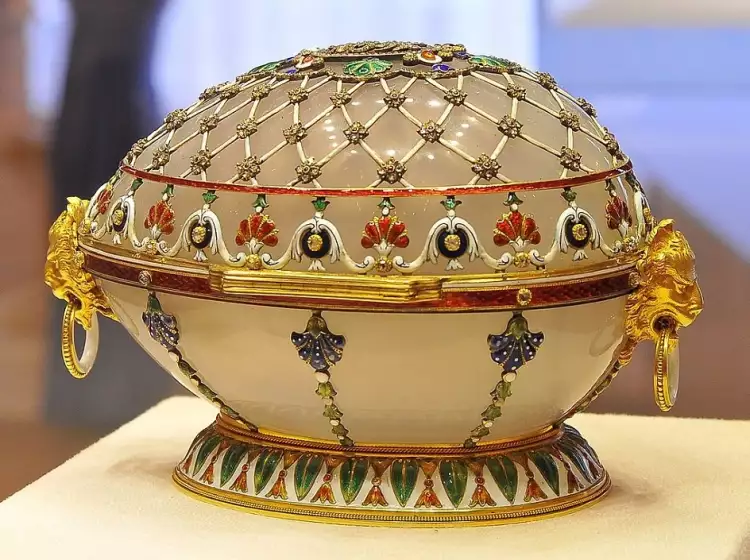 Jewellery. Carl Fabergé. Easter Egg Renaissance, 1894
Jewellery. Carl Fabergé. Easter Egg Renaissance, 1894
The jewelers of Ancient Rome inherited the traditions of their Greek neighbors and supplemented them with their unique innovations. They began to widely use gold and precious stones not only for personal adornments but also for crafting furniture and other interior objects. However, after the fall of Rome under the pressure of barbarian invasions in the late 5th century, many secrets of the craftsmen were lost for a long time.
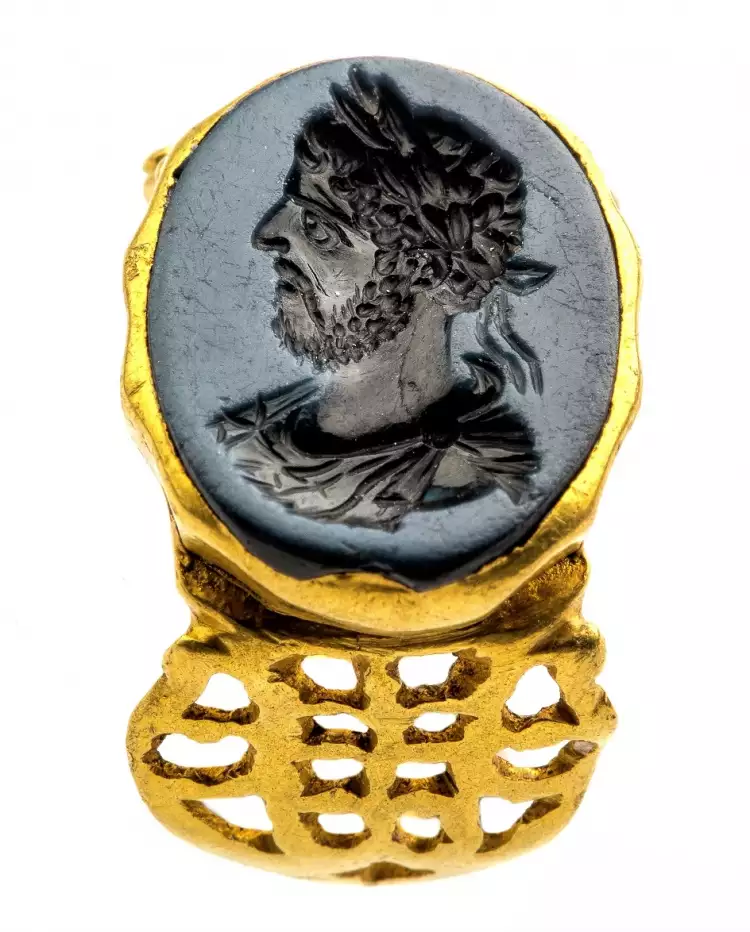 Jewellery. Roman gold ring with the portrait of Emperor Commodus, 2nd century AD
Jewellery. Roman gold ring with the portrait of Emperor Commodus, 2nd century AD
In the Byzantine Empire, after the adoption of Christianity, jewelry art was monopolized by the church for many centuries. Unknown artisans produced a vast number of various cult items for temples, as well as coverings for icons and sacred books. Similarly, events unfolded in the Middle Ages throughout Western Europe.
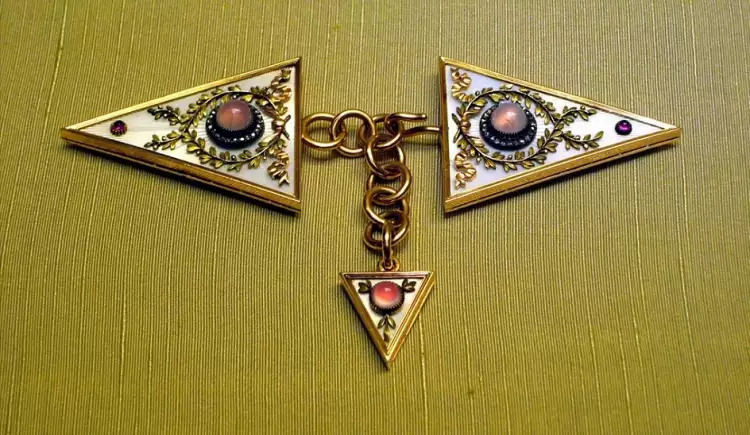 Jewellery. Carl Fabergé. Agraffe jewellery, early 20th century
Jewellery. Carl Fabergé. Agraffe jewellery, early 20th century
It was only in the 13th century, at the dawn of the Renaissance, that jewelry began to reappear in the ceremonial attire of the European nobility. Humanism and the rapid development of all arts, including jewelry making, started to spread throughout society. Wearing buckles, rings, necklaces, and belts adorned with precious gemstones became fashionable, and the profession of a jeweler regained widespread demand.
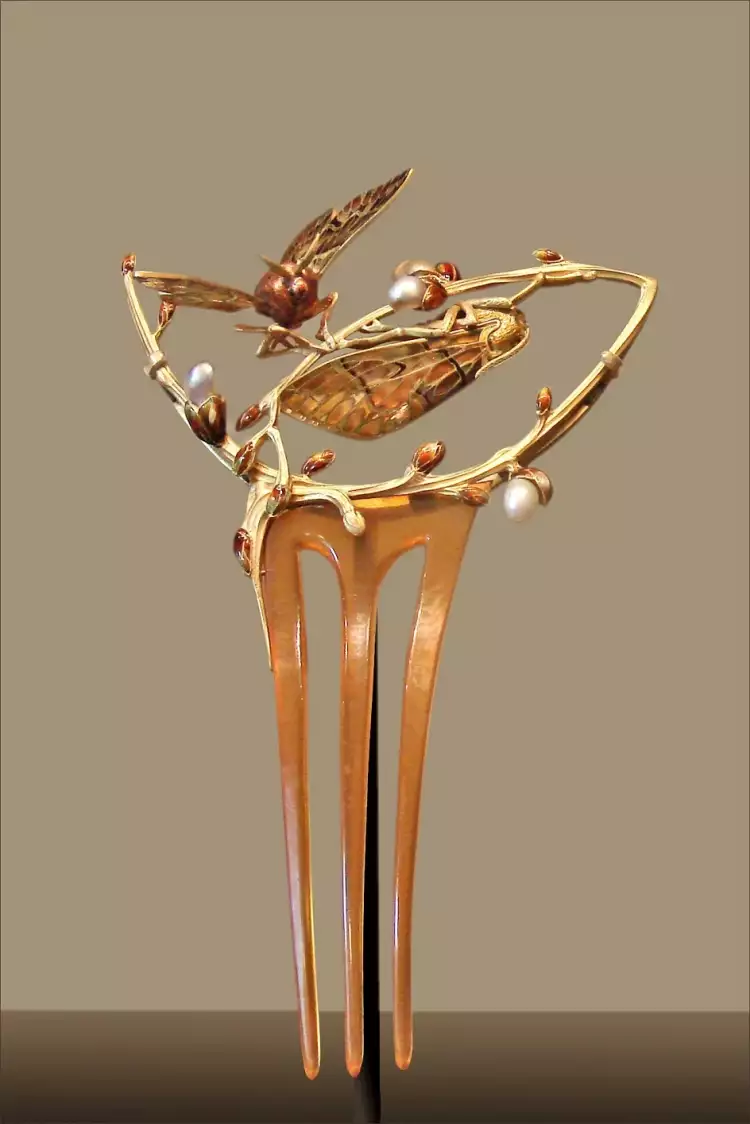 Jewellery. Art Nouveau decorative comb, 1902
Jewellery. Art Nouveau decorative comb, 1902
During the Age of Great Geographical Discoveries (late 14th to late 17th centuries), Europeans finally got acquainted with examples of jewelry art from other regions of the world. Sailors and later adventurers began to bring jewelry pieces from Africa, India, and China made by local jewelers. At the same time, an immense number of unique gold masterpieces from pre-Columbian civilizations of America were melted down by Spanish conquistadors into coins and ingots.
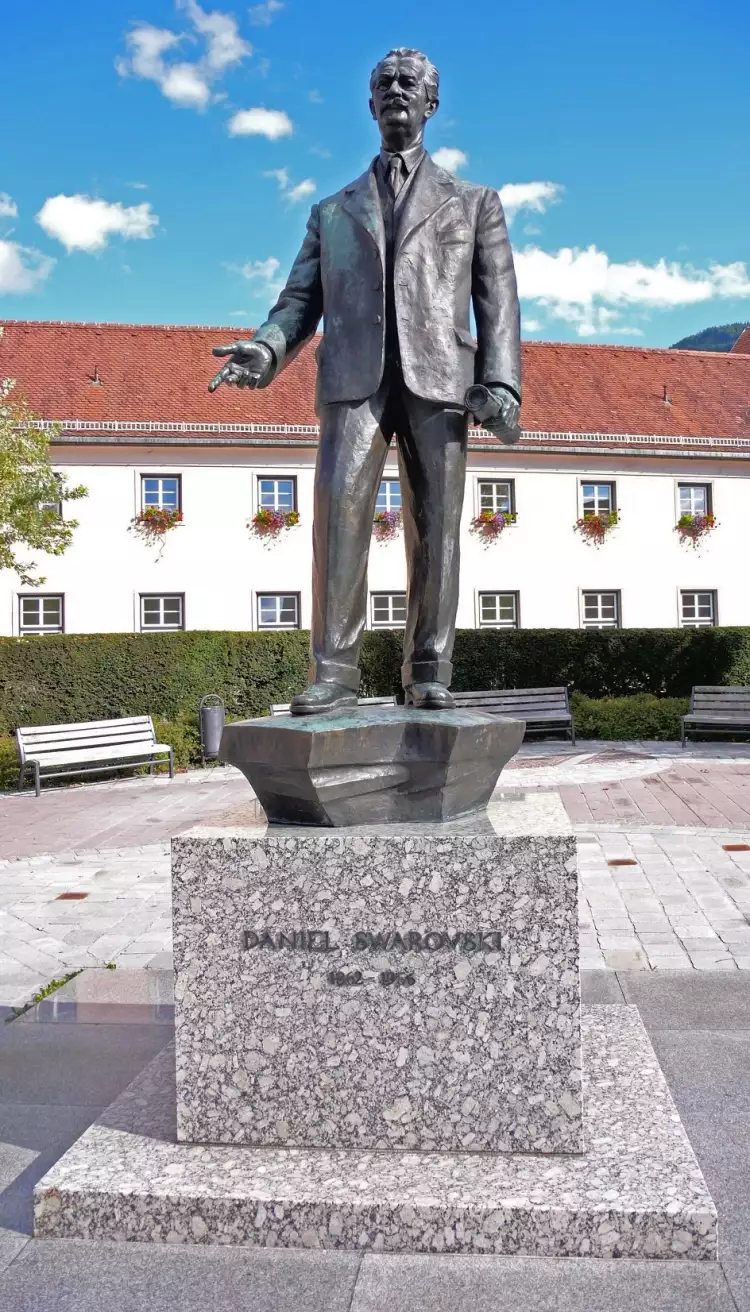 Jewellery. Gustinus Ambrosi. Monument to Daniel Swarovski in Wattens, 1960
Jewellery. Gustinus Ambrosi. Monument to Daniel Swarovski in Wattens, 1960
In the following centuries, jewelry making, like other art forms, experienced periods of prosperity and decline, with various styles succeeding one another, and new techniques and materials emerging. In the 19th century, mass industrial production of jewelry began, and internationally renowned jewelry companies were established, such as the French Cartier, the American Tiffany & Co, and the Austrian Swarovski AG.
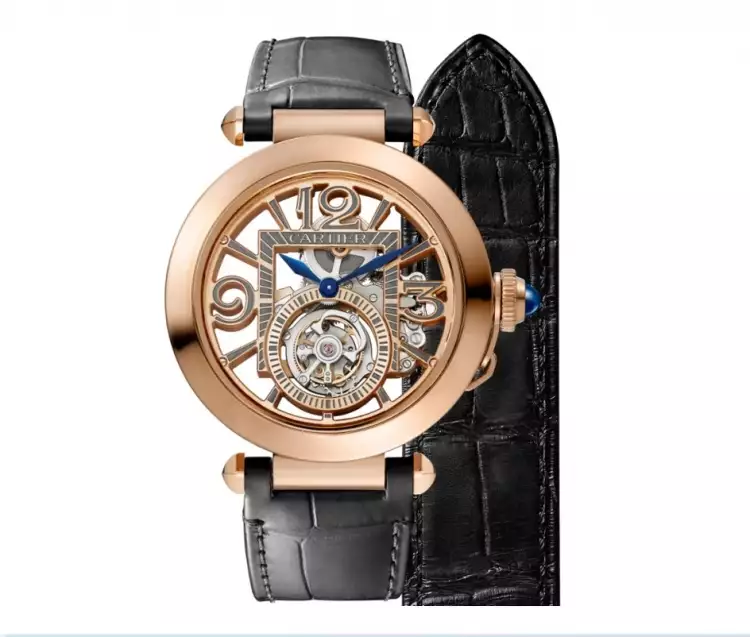 Jewellery. Cartier watch from the Pasha de Cartier series, 1980s
Jewellery. Cartier watch from the Pasha de Cartier series, 1980s
The Most Famous Masters of Jewelry Making
The names of the vast majority of skilled ancient jewelers are forever lost to posterity, and only a few of them are known to a narrow circle of specialists. Many creative personalities who worked with precious stones and metals made a significant contribution to world culture. Nevertheless, among the most famous masters of jewelry making are:
- Carl Fabergé - a Russian jeweler of German origin, the founder of the famous dynasty of master jewelers known for creating Easter eggs for the imperial Romanov family. It took the team of craftsmen under the leadership of Carl Fabergé a whole year to create one masterpiece, and each egg today represents immense artistic value.
- Charles Lewis Tiffany - the founder of a huge multinational jewelry company named after him. Tiffany was not only a talented jeweler but also a successful entrepreneur, and the value of the company he created now amounts to over 16 billion dollars.
- Daniel Swarovski - an Austrian engineer who created the world-famous company specializing in the processing of precious stones - the leader of the global market for cut crystal. Swarovski crystals are currently used by top designers and fashion designers in developing elite clothing collections.
- Louis-François Cartier - a French jeweler, the founder of the Cartier company and a vast network of specialized stores around the world. His company gained worldwide fame later thanks to his grandsons' development of watches adorned with precious stones.
 Jewellery. Tiffany shop in Hong Kong, 21st century
Jewellery. Tiffany shop in Hong Kong, 21st century
In modern times, jewelry making remains a sought-after form of art. The unique masterpieces of ancient craftsmen adorn the halls of the world's finest museums and the private collections of the richest people on our planet. As for ordinary people, they purchase mass-produced jewelry items for themselves and their loved ones as their means allow.
 Carl Fabergé - a Russian jeweler known throughout the world
Carl Fabergé - a Russian jeweler known throughout the world  Photography is an art accessible to everyone
Photography is an art accessible to everyone  Silver - a noble metal
Silver - a noble metal 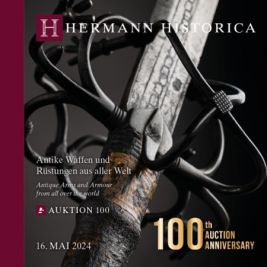 Antique arms and armour from all over the world
Antique arms and armour from all over the world 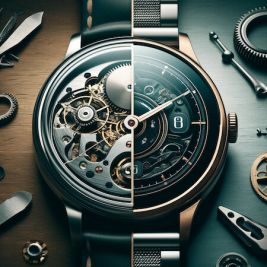 Navigating the Currents: The Tension Between Vintage and Modern Watches
Navigating the Currents: The Tension Between Vintage and Modern Watches  Japandi style in interior design - a minimalist fusion of East and West
Japandi style in interior design - a minimalist fusion of East and West 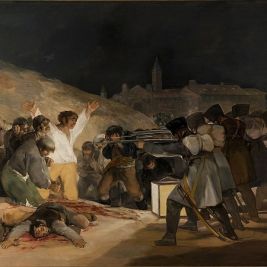 The top 10 most famous Spanish artists - the greatest masters of art of all time
The top 10 most famous Spanish artists - the greatest masters of art of all time 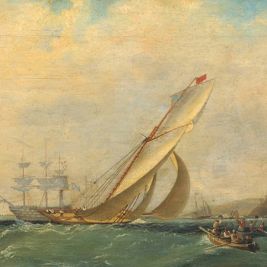 Marine landscape is the most romantic genre of visual art: history, artists, and paintings
Marine landscape is the most romantic genre of visual art: history, artists, and paintings 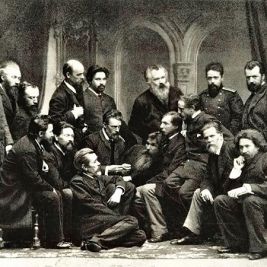 Peredvizhniki: Revolution in Russian Art of the 19th century
Peredvizhniki: Revolution in Russian Art of the 19th century  Painting: its types, styles, genres, techniques, and history of origin
Painting: its types, styles, genres, techniques, and history of origin